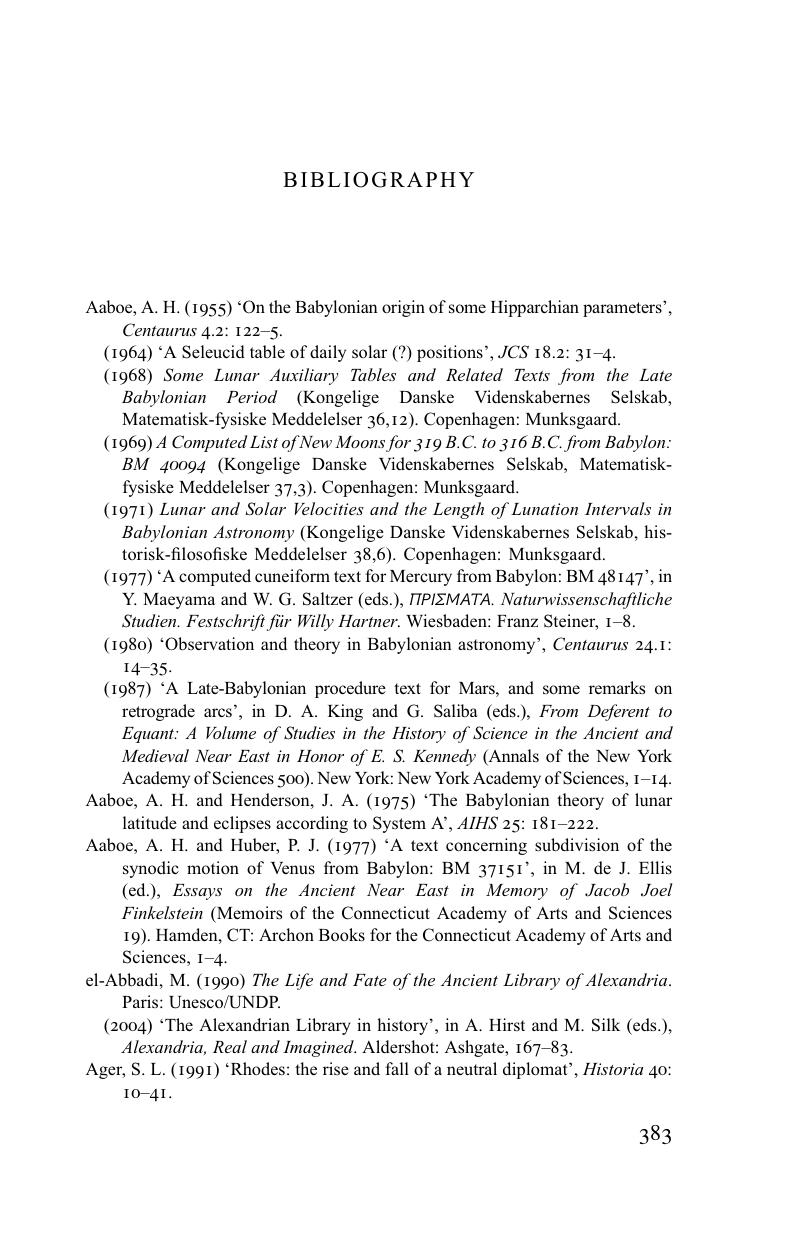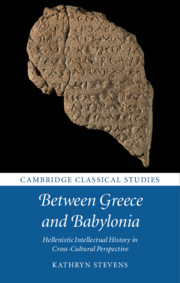Book contents
- Between Greece and Babylonia
- Cambridge Classical Studies
- Between Greece and Babylonia
- Copyright page
- Dedication
- Contents
- Figures
- Acknowledgements
- A Note on Transliteration, Transcription and Translation
- Abbreviations
- Chapter 1 In Search of Hellenistic Intellectual History
- Chapter 2 The Study of the Heavens
- Chapter 3 Berossus and the Graeco-Babyloniaca
- Chapter 4 Alexandria: the Missing Link?
- Chapter 5 Kings and Scholars
- Chapter 6 New Horizons: Hellenistic Intellectual Geographies
- Chapter 7 From Šulgi to Seleucus: Hellenistic Local Histories
- Chapter 8 Epilogue: towards a New Hellenistic Intellectual History
- Glossary of Selected Places, Deities and Technical Terms
- Bibliography
- Index
- References
Bibliography
Published online by Cambridge University Press: 29 May 2019
- Between Greece and Babylonia
- Cambridge Classical Studies
- Between Greece and Babylonia
- Copyright page
- Dedication
- Contents
- Figures
- Acknowledgements
- A Note on Transliteration, Transcription and Translation
- Abbreviations
- Chapter 1 In Search of Hellenistic Intellectual History
- Chapter 2 The Study of the Heavens
- Chapter 3 Berossus and the Graeco-Babyloniaca
- Chapter 4 Alexandria: the Missing Link?
- Chapter 5 Kings and Scholars
- Chapter 6 New Horizons: Hellenistic Intellectual Geographies
- Chapter 7 From Šulgi to Seleucus: Hellenistic Local Histories
- Chapter 8 Epilogue: towards a New Hellenistic Intellectual History
- Glossary of Selected Places, Deities and Technical Terms
- Bibliography
- Index
- References
Summary

- Type
- Chapter
- Information
- Between Greece and BabyloniaHellenistic Intellectual History in Cross-Cultural Perspective, pp. 383 - 431Publisher: Cambridge University PressPrint publication year: 2019



